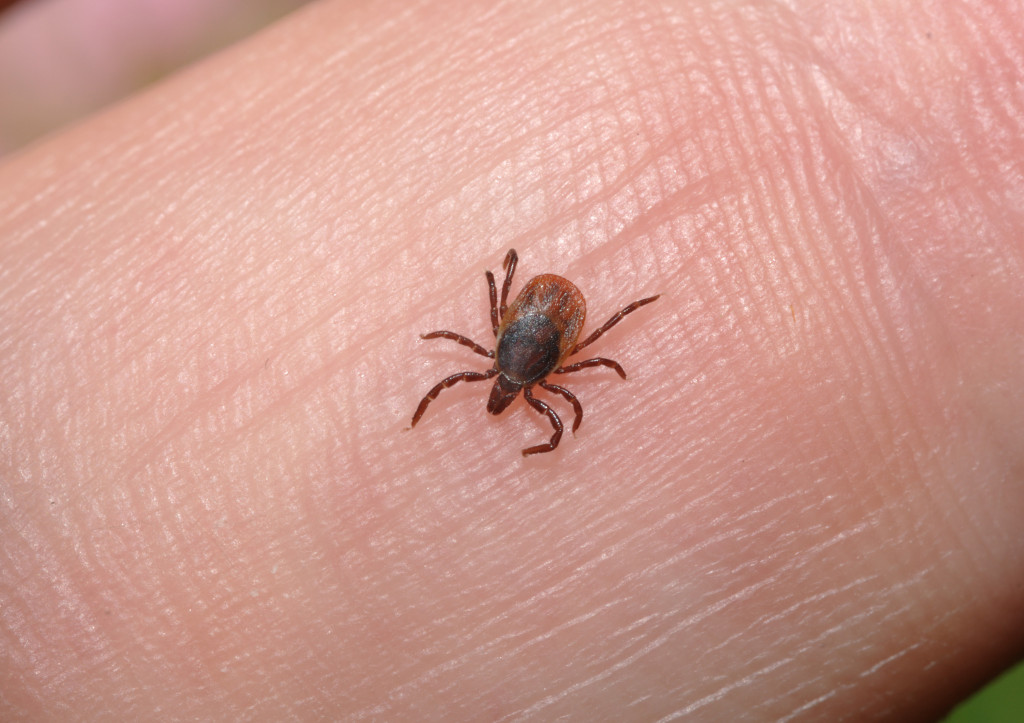You might have never heard of a dog tick before, but they are a common parasite found in the United States. In fact, there is about 1 in 5 chance that your dog has been bitten by one at some point in their lifetime!
And they are definitely harmful, enough reason to consider tick control even during the colder months (and you will know why later).
What Is the American Dog Tick?
This is the tick that most often bites dogs in North America. Although it can bite people, including children, its preferred hosts are dogs and other carnivores. It is most prevalent in wooded areas with tall grasses or shrubs. The American dog tick can carry diseases that affect both dogs and humans.
This tick usually appears brown or reddish-brown with white markings on its back. Females have a small scutum behind their heads. Males do not have this shield-like structure.
Males are smaller than females when fully grown at about one-fourth-inch long (6 mm). Females are larger when fully grown, at about a half-inch long (14 mm). Nymphs look like adults but are much smaller, only slightly larger than the nits.
Adult ticks lay eggs in masses of about 2,000 each. The eggs are off-white when first laid but soon turn brown. After being deposited on vegetation near the soil surface, they hatch into six-legged larvae that look like tiny spiders with no eyes or legs.
Larvae feed on mice or other small animals nearby and then molt into eight-legged nymphs after three to four weeks. Nymphs search for a blood meal before molting again to become adults, which will also need another blood meal before laying eggs.
They have a longer lifespan compared to other insects or pests. They can live up to two years or longer, depending upon food sources and climate conditions. This species is very cold tolerant, unlike others. For this reason, tick prevention measures should be all year-round instead of only during the summer months.
How Is This Tick Harmful?
The common American dog tick is the primary carrier of Rocky Mountain spotted fever, affecting both humans and dogs. Bacteria in its gut cause this disease, transmitted via the tick’s bite when it takes a blood meal (requires one feeding for females).
Rocky Mountain spotted fever is a bacterial disease that might develop from mild headaches, muscle aches, and fever to severe febrile illnesses with confusion, delirium, and abdominal pain. It affects mostly people under the age of 40. If untreated, it can be fatal.
In its early stages, Rocky Mountain spotted fever might be confused with viral diseases such as measles or infectious mononucleosis (mono). Many cases can go unreported because some people never seek medical attention for their symptoms. There are about 5,000 to 6,000 reported cases of Rocky Mountain spotted fever in the United States each year.

Symptoms of Rocky Mountain Spotted Fever
The initial symptoms of Rocky Mountain spotted fever typically occur between one and five days after a tick bite. It includes headache, backache, aching muscles, and pain in joints such as knees or elbows.
Some people develop a skin rash, which appears from two to four days after the start of the illness. In some cases, only a few spots appear from which it gets its name. But they can cover most of an individual’s body within 24 hours. These spots usually fade after three days or so, leaving behind a pinkish or brownish discoloration.
Lyme Disease in Dogs
It can also transmit the “c” strain of Lyme disease occasionally. Dogs are extremely sensitive to Lyme disease, but most people do not have severe reactions to this bacterial disease. Rarely, in very unusual situations after multiple bites that occur in some areas, human paralysis or death has occurred due to an inflammatory reaction resulting from a bite.
Ticks are often found on pets, so pet owners should check their animals carefully for ticks after spending time outdoors where they have been active. Pets should be checked every day to prevent these creatures from attaching and obtaining a blood meal, which they require before laying eggs.
Ticks prefer cool, moist areas of skin or fur where they attach to quietly suck blood until they become engorged, at which point the host moves them to another location (e.g., pets lying in bed). Thus, checking warm hairy spots often is important because it will reveal attached ticks that otherwise might harm your pet if left unchecked. Pets bring ticks into homes if allowed to roam outside as well.
The best defense, though, remains tick control. If you live in wooded areas, call an expert right away.
